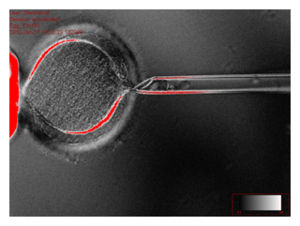|
|
Richard Sawyer
Sott.net 2013-05-15 15:01:00
The anti-Assad propaganda is in full swing with contradictory andunsubstantiated claims that the Syrian government has "used chemical weapons against its own people." Against this backdrop of faulty, evocative rhetoric, Israel recently launched deadly air strikes on Syrian territory. Like textbook plagiarism or a record on repeat, we're seeing a re-run of the 'Weapons of Mass Destruction' (WMD) lies that led to the illegal invasion of Iraq ten years ago. UN investigator Carla del Ponte reported that if any sarin gas was used in Syria, it was actually fired by the US-backed opposition rebel forces, not the state forces of President Bashar al-Assad. The damning additional fact is that the Syrian 'rebels' the West are arming are, in reality, terrorist 'Al-Qaeda' factions, as has been admitted in the French dailyLe Monde and supported by an admission in the New York Times. Just as manyAzawadi rebels in northern Mali last year defected from the National Movement for the Liberation of Azawad to Al-Qaeda-in-the-Islamic- | |
 |

| No new articles. |

| Puppet Masters |
|
RIA Novosti
2013-05-17 15:24:00
A Russian intelligence agency Friday publicly identified an individual it claims was the Moscow station chief of the US Central Intelligence Agency (CIA) as of late 2011 - a move widely seen as a breach of protocol in the intelligence community. A man identified as an official with Russia's Federal Security Service (FSB) named the alleged CIA station chief in an interview with state-run television Friday in which he gave new details about the agency's highly publicized detention of purported US spy Ryan Fogle earlier this week. In the interview, the FSB official reiterated earlier claims that his agency had explicitly called on the CIA to stop trying to recruit Russian security and intelligence officers. In late 2011, he added, the FSB formally warned the CIA station chief in Moscow, whom he identified by name, that "in the event that provocative efforts to recruit employees of the Russian special services continue, the FSB ... would take reciprocal measures against American intelligence officers." | |
 |



|
RT.com
2013-05-16 11:50:00
Moscow will make no "backstage" agreements on Syria in exchange for Western concessions on missile defense or any other disputed issues, Russian Foreign Minister Sergey Lavrov has said. "This is not serious. I think that those who try suggest that indulge in wishful thinking," Lavrov said in an interview with Lebanon's Al Mayadeen TV channel. "Everyone knows well that Russia's stance on a whole range of crucial issues is not opportunistic," the Russian top diplomat emphasized. At the same time, he pointed out, this does not mean that Moscow's position on such issues is definitive. "We defend only the things that are in the basis of modern world order - the US Charter principles and other international legal documents, and we insist on their fulfillment," Lavrov said. "We do not want and we will not put up with attempts to distort reached agreements, particularly the legally binding ones," he underlined. However, within the framework of these principles and agreements, Moscow is ready to look for compromises, acceptable primarily for the sides of the conflict. Lavrov reiterated that Russia does not support President Bashar Assad in the Syrian conflict. He explained that Moscow acts not "for the sake of the regime or any person inside of at the top of this regime" but for the sake of the Syrians. The minister noted it was Russia's aim to stop suffering and uphold the basic principles of international law - such as national sovereignty, territorial integrity and non-interference in internal affairs. | |
 |

|
Tyler Durden
Previously, when looking at the real underlying national interests responsible for the deteriorating situation in Syria, which eventually may and/or will devolve into all out war with hundreds of thousands killed, we made it very clear that it was always and only about the gas, or gas pipelines to be exact, and specifically those involving the tiny but uber-wealthy state of Qatar. Needless to say, the official spin on events has no mention of this ulterior motive, and the popular, propaganda machine, especially from those powers supporting the Syrian "rebels" which include Israel, the US and the Arabian states tries to generate public and democratic support by portraying Assad as a brutal, chemical weapons-using dictator, in line with the tried and true script used once already in Iraq.ZeroHedge.com 2013-05-17 11:29:00
On the other hand, there is Russia (and to a lesser extent China: for China's strategic interests in mid-east pipelines, read here), which has been portrayed as the main supporter of the "evil" Assad regime, and thus eager to preserve the status quo without a military intervention. Such attempts may be for naught especially with the earlier noted arrival of US marines in Israel, and the imminent arrival of the Russian Pacific fleet in Cyprus (which is a stone throw away from Syria) which may catalyze a military outcome sooner than we had expected. However, one question that has so far remained unanswered, and a very sensitive one now that the US is on the verge of voting to arm the Syrian rebels, is who was arming said group of Al-Qaeda supported militants up until now. Now, finally, courtesy of the FT we have the (less than surprising) answer, which goes back to our original thesis, and proves that, as so often happens in the middle east, it is once again all about the natural resources. | |
 |

|
RT News
2013-05-16 08:35:00
Warships from Russia's Pacific Fleet have entered the Mediterranean for the first time in decades. Russia's Navy Chief says the task force may be reinforced with nuclear submarines, as the country starts building up a permanent fleet in the region. "The task force has successfully passed through the Suez Channel and entered the Mediterranean. It is the first time in decades that Pacific Fleet warships enter this region," the Pacific Fleet spokesman, Capt. First Rank Roman Martov told RIA.
The vessels are now heading to Cyprus and will make a port call in the city of Limassol, he added. The group includes destroyer "Admiral Panteleyev," two amphibious warfare ships "Peresvet" and "Admiral Nevelskoi," as well as a tanker and a tugboat. The ships left the Far-Eastern port city of Vladivostok on March 19 to join Russia's Mediterranean task force, which currently consists of vessels from Northern, Baltic, and the Black Sea Fleets, including a large anti-submarine ship, a frigate and a Ropucha-II Class landing ship. | ||
 |

| Society's Child |
|
RIA Novosti
2013-05-17 15:35:00
Russian authorities have launched a criminal case into the suspected beating of children by teenage caretakers in a Far Eastern orphanage on Friday, a day after a video sparked internet outrage. The video, made in the orphanage in the town of Pionersky in the Far Eastern Amur Region, shows a teenage girl who lashes boys aged between seven and nine with a belt. Seven boys are lined up against a wall as she calls the children forward one by one, beats them and shoves them away. Police opened a criminal case on charges of torture, which entail a maximum punishment of seven years in prison. Three girls, aged between 15 and 17 are seen as likely suspects. Two of them were taken to a detention facility for minors. The third teenager, who is under 16 years - the age of criminal responsibility on these charges - was hospitalized for reasons not related to the incident. | |
 |

| Secret History |
| No new articles. |

| Science & Technology |
|
Stephanie Pappas
LiveScience 2013-05-17 11:42:00
A new stem cell discovery has reawakened controversy about human cloning - though technical challenges mean scientists are far from being able to create human babies as in Michael Bay's 2005 sci-fi flick "The Island." Not that they would even want to. "Nobody in their right mind would want to do that," said John Gearhart, the director of the Institute for Regenerative Medicine at the University of Pennsylvania, who was not involved in the study. And indeed, the research wasn't conducted with the idea of creating cloned mini-me's in mind. Instead, scientists attempting to treat diseases of the cell's powerhouse, the mitochondria, refined the technique, which is the same one used to create the cloned sheep Dolly in 1996. But the parallels between the animal-cloning procedure and the new human one have triggered concern. The U.S. Conference of Catholic Bishops (USCCB) swiftly issued a statement condemning the research, both on the grounds that embryos were destroyed in the research process and over the concern that the full reproductive cloning of humans is on its way. "They or others may be close to being able to develop cloned human embryos to the fetal stage and then beyond," said Richard Doerflinger, the associate director of USCCB's Secretariat of Pro-Life Activities. | |
 |

|
Ernesto Guido & Nick Howes
Asteroid (285263) 1998 QE2 was discovered on Aug. 19, 1998, by the Massachusetts Institute of Technology Lincoln Near Earth Asteroid Research (LINEAR) program.Remanzacco Observatory 2013-05-17 16:59:00 1998 QE2 has an estimated size of 1.3 km - 2.9 km (based on the object's absolute magnitude H=16.6). It was observed by the Spitzer Space Telescope byTrilling et al. (2010), who estimated that it has a diameter of 2.7 km and a dark optical albedo of 0.06. This asteroid will have a close approach with Earth at about 15.2 LD (Lunar Distances = ~384,000 kilometers) or 0.0392 AU (1 AU = ~150 million kilometers) at 2059 UT on 2013 May 31 and it will reach the peak magnitude ~10.8 on May 31 around 2300 UT. (285263) 1998 QE2 will be a great Goldstone radar target May 30 through June 9. This is going to be one of the best radar targets of the year. Radar images from the Goldstone antenna could achieve resolutions as fine as 3.75 meters. We performed some follow-up measurements of this object, from the Q62iTelescope network (Siding Spring) on 2013, May 17.36, through a 0.50-m f/6.8 astrograph + CCD + f/4.5 focal reducer. |
 |

|
Larry O'Hanlon
Discovery News 2013-05-17 06:00:00
In 2/3 of the world it's still unlucky to be born a leftie, says a researcher who has taken a new look at attitudes about left-handed people worldwide. In China, in particular, less than 1 percent of students are reportedly left-handed, despite a global average of 10 to 12 percent of humans preferring their left hand, reports Howard Kushner, a researcher and Professor of Science and Society at Emory University in Atlanta. It's not that there are fewer people born left-handed in China or necessarily that there are negative attitudes about lefties there. It's just that being left-handed is especially impractical. "If you have to cater a huge society, you can't cater to the other side," Kushner said. And with 88 to 90 percent of the population right-handed, and some written characters requiring a right hand, that's what wins out, at least when it comes to writing. Kushner summarized the situation for Chinese southpaws in an article in the June edition of the journal Endeavour. So is left-handedness going extinct in China? Probably not, says Kushner, because there doesn't seem to be a simple genetic basis for handedness. What's more, studies on Chinese-Americans in California show a similar rate of left-handers as the rest of the U.S. population -- so there is nothing about being Chinese or Asian that makes a person less prone to being left-handed. But being born in China does mean you will likely be forced to function as a right-hander, Kushner concludes. | |
 |

|
Eric Niiler
Discovery News 2013-05-17 11:15:00
In the new techno-thriller Upload, a young computer scientist with a sketchy past and distrust of society decides to take the ultimate leap forward by scanning his brain and uploading his memories, personality and consciousness into a simulated world of his own making. Raymond wants to live forever, controlling his environment and interactions with other humans as a god-like being. The novel by author Mark McClelland is set in the Michigan of 2070 about the time that futurists like Ray Kurzweil predict that "singularity" will be reached, the moment when machine learning will surpass human intelligence. It's not the first science-fiction tale to explore human-computer hybrids (see What are Little Girls Made Of in the first season of the original Star Trek series) or even the perils of virtual reality becoming too real (see the "Matrix" triology). But it does posit some questions that real-world researchers are just now tackling. The European Union, for example, recently announced it was funding a $1.3 billion project to build a human brain on a silicon substrate. That's about 1 1/2 cents per neuron. Swiss neuroscientist Henry Markham, who is behind the Human Brain Project, has already started work on building a simulated rat brain. | |
 |

|
Marshall Honorof
TechNewsDaily 2013-05-17 14:52:00
Complex robots are like animals: They learn by doing. Future robots may even respond to reward systems: complete a task with aplomb, and a gain a "feeling" of satisfaction for a job well done. While this technology could create more efficient, goal-oriented robots, it could also have some very dire ramifications for humanity. After all, robots that feel rewarded by making humans happy may eventually decide that if no humans exist, no human will ever be unhappy again. "Robots without preferences can't have complicated behaviors," Roman V. Yampolskiy, director of the Cybersecurity Research Lab at the University of Louisville, told TechNewsDaily. "To make machines which are independent and creative, we need to give them rewards and preferences." While Yampolskiy believes that robots can be indispensible tools, he also warns that as they learn to seek rewards, they may learn to circumvent helping humans. "I am trying to make sure that any AI software we develop is safe to use and beneficial to humanity," he said. Yampolskiy asserts that robots with the capacity for feelings of pleasure would, in all likelihood, take all the same shortcuts that humans use to acquire it. In a recent paper, he described the process of "wireheading," which sent an electric jolt through the pleasure center of a rat's brain. "The rat's self-stimulation behavior completely displaced all interest in sex, sleep, food and water, ultimately leading to premature death," Yampolskiy wrote. | |
 |

|
Clara Moskowitz
SPACE.com 2013-05-17 12:43:00
The moon has a new hole on its surface thanks to a boulder that slammed into it in March, creating the biggest explosion scientists have seen on the moon since they started monitoring it. The meteorite crashed on March 17, slamming into the lunar surface at a mind-boggling 56,000 mph (90,000 kph) and creating a new crater 65 feet wide (20 meters). The crash sparked a bright flash of light that would have been visible to anyone looking at the moon at the time with the naked eye, NASA scientists say. "On March 17, 2013, an object about the size of a small boulder hit the lunar surface in Mare Imbrium," Bill Cooke of NASA's Meteoroid Environment Office said in a statement. "It exploded in a flash nearly 10 times as bright as anything we've ever seen before."
NASA astronomers have been monitoring the moon for lunar meteor impacts for the past eight years, and haven't seen anything this powerful before. Scientists didn't see the impact occur in real time. It was only when Ron Suggs, an analyst at NASA's Marshall Space Flight Center in Huntsville, Ala., reviewed avideo of the bright moon crash recorded by one of the moon monitoring program's 14-inch telescopes that the event was discovered. "It jumped right out at me, it was so bright," Suggs said. Scientists deduced the rock had been roughly 1-foot-wide (between 0.3 to 0.4 meters) and weighted about 88 lbs (40 kg).The explosion it created was as powerful as 5 tons of TNT, NASA scientists said. When researchers looked back at their records from March, they found that the moon meteor might not have been an isolated event. | ||
Comment: It's rather nice of NASA to just now inform us of this though there were rumors of this event and nothing to attach to it at the time from the MSM. Just for fun, take a peek at the large number of meteor sightings here on the BBM around that same time.
| ||
 |

|
IBTimes.co.uk
Nasa scientists are getting excited about seeing the QE2 in the hope it will reveal crucial new insights. But it is not Her Majesty's defunct steam liner which is lying in dock in Dubai which has set stargazers in Houston, Texas, agog. The object is an asteroid flying through space which is as big as 19 of the former royal vessel. It measures 1.7 miles in length.2013-05-17 16:02:00
1998 QE2 is set to come close to our world when it flys past in its orbit of the sun, on May 31. Scientists will use the Near Earth Object (NEO) event to help plan for an audacious bid to land on a lump of space rock in four years time as part ofasteroid defence planning. Nasa scientist Lance Benner said: Whenever an asteroid approaches this closely, it provides an important scientific opportunity to study it in detail to understand its size, shape, rotation, surface features, and what they can tell us about its origin. "We will also use new radar measurements of the asteroid's distance and velocity to improve our calculation of its orbit and compute its motion farther into the future than we could otherwise." Earth's upcoming brush with an extra-terrestial object should not contain the risk of causing chaos for us on earth, like the Russian meteor earlier this year. 1998 QE2 shall fly past earth 3.6m miles above our heads. A Nasa spokesman claimed there is no connection between the asteroid and the British royal cruise ship. | |
 |

| Earth Changes |
|
Emily Sohn
Discovery News 2013-05-17 05:15:00
From urban and developed to remote and isolated, lakes around Minnesota contain a wide range of chemicals, including DEET, BPA, prescription drugs and even cocaine. The findings, which came out of the first large-scale, systematic statewide study, suggest that it might be worth taking a wider look at bodies of water around the country for chemicals that have potential consequences for both the environment and human health. For now, it's not clear how all of the chemicals are getting into Minnesota's lakes or exactly what effects they might be having on animals or people. "It's not as though people should worry about going to the lake or taking their dogs to the lakes," said Mark Ferrey, an environmental scientist at the Minnesota Pollution Control Agency, which published the new report. "We're talking about how we're affecting lakes and rivers in ways that we probably don't understand yet." "It's disquieting," he added. "We could be affecting fish populations or entire ecosystems in ways that are largely invisible to us." Starting about a decade ago, in routine reconnaissance, Ferrey and colleagues began collecting surface waters from rivers and streams around Minnesota. As expected, analyses showed contaminants downstream from wastewater treatment plants and in other highly developed areas. But the researchers were surprised when chemicals also turned up in background samples collected in lakes with mostly untouched shorelines. | |
 |

|
Butterfly Conservation
The UK's spring butterflies are being welcomed by enthusiasts, but weeks later than they usually arrive.2013-05-17 14:50:00
The second-coldest March on record contributed to the delayed emergence of many rare species, according to the charity Butterfly Conservation. "First sightings" recorded by the public showed the insects typically appeared a fortnight later than normal. One rare species - the grizzled skipper - emerged a month later than last year. The pearl-bordered fritillary was another rare butterfly to make a late show. Last year the insects were first spotted on 1 April but were not recorded until 27 April this year. Threatened wood whites could be seen by 10 April last year, but this year were delayed until early May. And the Duke of Burgundy butterfly made an appearance in late April this spring, around three weeks later than last year. Last spring saw butterflies emerging earlier than normal following an unusually mild February and March. But the extreme wet weather that followed resulted in a terrible year for most species. Butterfly Conservation's findings, which focus on the UK's rare and threatened species, show a large contrast with last years' spring sightings. | |
 |

|
The Guardian
2013-05-17 12:42:00 Residents in Chile discover around 600 dead animals washed up on the shore in Punta Choros, on the country's northern coast. Officials fear the deaths were caused by blast fishing, explosions used by fishermen to rid the water of sea lions and seals that compete with them for fish stocks. Fishing is one of the most valuable industries to Chile, which has more than 4,000 km (2,500 miles) of coast |
 |

|
The Extinction Protocol
Earthquakes Canada is reporting a5.1-magnitude earthquake just west of Ottawa that was felt as far away as Toronto. The federal agency that monitors earthquakes revised its original report, saying it registered a 5.1-magnitude temblor with an epicenter located about 21 kilometers (13 miles) northeast of Shawville, Quebec, about an hour's drive outside Ottawa. It was felt as far west as Toronto, Canada's largest city, but no damage was immediately reported. Twitter erupted with reports of buildings shaking in Ottawa for several seconds. Ontario's premier, who lives in Toronto, tweeted that her house was shaking. Ontario Provincial Police in Arnprior, Ontario, not far from the epicenter, say they have received no reports of damage. The original report said a 4.8-magnitude quake was centered near the town of Braeside, Ontario. - HP2013-05-17 12:02:00
| |
 |

|
2011MESSAGE
Youtube 2013-05-15 08:29:00 |
 |

|
10news.com
Squirrel trapped in Palomar Mountain campground2013-05-05 05:03:00
A ground squirrel that tested positive for plague on Palomar Mountain has led San Diego County health officials to warn campers and hikers to take precautions."The big thing is to avoid contact with squirrels and the fleas that they can carry," Department of Environmental Health director Jack Miller said. "Campers should set up tents away from squirrel burrows, never feed squirrels and warn children not to play with squirrels." Miller said. A squirrel trapped at Cedar Grove Campground on Palomar Mountain was the first reported case of plague in San Diego County this year. Plague is a bacterial disease of wild rodents that is transmitted to people by fleas that feed on the blood of a sick animal and then bite humans. | |
 |

| Fire in the Sky |
| No new articles. |

| Health & Wellness |
|
Rhiannon Bugno
The relationship between the heritable risk for schizophrenia and low intelligence (IQ) has not been clear. Schizophrenia is commonly associated with cognitive impairments that may cause functional disability. There are clues that reduced IQ may be linked to the risk for developing schizophrenia. For example, reduced cognitive ability may precede the onset of schizophrenia symptoms. Also, these deficits may be present in healthy relatives of people diagnosed with schizophrenia.Elsevier 2013-05-16 15:31:00 In a remarkable new study published in Biological Psychiatry, Dr. Andrew McIntosh and his colleagues at the University of Edinburgh provide new evidence that the genetic risk for schizophrenia is associated with lower IQ among people who do not develop this disorder. The authors analyzed data from 937 individuals in Scotland who first completed IQ testing in 1947, at age 11. Around age 70, they were retested and their DNA was analyzed to estimate their genetic risk for schizophrenia. The researchers found that individuals with a higher genetic risk for schizophrenia had a lower IQ at age 70 but not at age 11. Having more schizophrenia risk-related gene variants was also associated with a greater decline in lifelong cognitive ability. |
 |

| Science of the Spirit |
|
LiveScience
2013-05-17 13:29:00
Even though most companies on paper say they don't tolerate bullying in the workplace, bullies can still thrive in office environments. This may be explained by a social gift many bullies share: They know how to strategically abuse their coworkers - with belittling comments, deliberate exclusion and the like - while still garnering positive evaluations from their supervisors, researchers say. "Many bullies can be seen as charming and friendly, but they are highly destructive and can manipulate others into providing them with the resources they need to get ahead," Darren Treadway, associate professor of organization and human resources at the University of Buffalo, said in a statement. In a new study, Treadway and colleagues measured bullying behavior and career success for by looking at behavioral and job performance data from 54 employees at a mental health organization in the northwest U.S. The researchers found a strong correlation between bullying, social competence and positive job evaluations. | |
 |

| High Strangeness |
| No new articles. |

| Don't Panic! Lighten Up! |
| No new articles. |






















